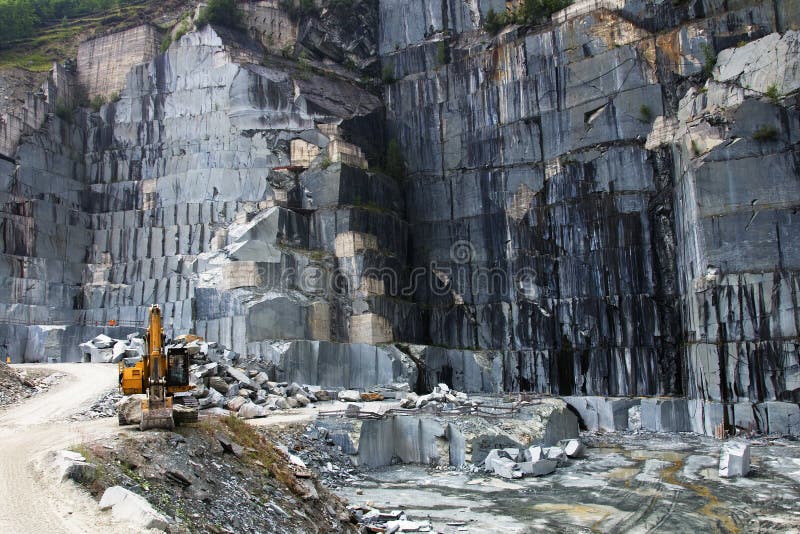Uncovering the Rich History and Sustainable Practices of Granite Quarrying
As we depend on the precipice of uncovering the detailed tapestry of granite quarrying, a journey with time reveals not simply the physical act of extracting stone yet also the social and historical significance woven into the really fabric of this method. From the ancient beginnings that laid the foundation for modern-day quarrying techniques to the sustainable methods that are shaping the future of this market, each sculpt mark on granite surface areas narrates waiting to be uncovered (granite quarries in south africa). The legacy of granite quarrying extends much past mere extraction; it is a testament to human resourcefulness, resilience, and the enduring appeal of this magnificent rock
Ancient Beginnings of Granite Quarrying
Dating back to old people, the technique of quarrying granite has actually been an integral component of human history and architectural improvement. The earliest proof of granite quarrying days back to ancient Egypt, where enormous pyramids and detailed sculptures were crafted from this sturdy rock. The Egyptians utilized primitive tools to extract granite blocks from quarries, showcasing the value of this product in their huge constructions.
Relocating forward in background, the Greeks likewise made significant payments to the quarrying of granite. The Greeks used granite in various building wonders, such as holy places and statues, showing their ability in shaping and carving this sturdy stone. The Romans further improved the methods of quarrying granite, using innovative devices like blades and hammers to extract and shape granite for their iconic structures.
Through the centuries, the technique of quarrying granite has advanced, with modern innovations improving effectiveness while maintaining the ageless appeal of this natural rock - granite quarries in south africa. From old human beings to contemporary contractors, the heritage of granite quarrying remains to shape our world
Development of Quarrying Strategies
The development of quarrying methods has been marked by a constant progression in the direction of greater effectiveness and accuracy in drawing out granite. From the basic techniques employed by our forefathers to the innovative technologies utilized in modern-day quarrying operations, the market has gone through substantial advancements. Early quarrying methods involved manual work with fundamental tools such as chisels, hammers, and wedges to extract granite blocks from the earth. As worlds progressed, strategies like fire-setting and primitive nitroglycerins were presented to facilitate the extraction process.
In even more recent times, the development of machinery transformed the quarrying sector, allowing much faster extraction prices and boosted productivity. Technologies such as ruby cord saws, high-pressure water jets, and pneumatic drills have come to be typical in modern quarries, enabling for precise cutting and reduced waste. Furthermore, developments in computer-controlled tools and 3D modeling have optimized quarrying operations, bring about marginal ecological impact and boosted sustainability techniques. As the demand for granite remains to climb, the advancement of quarrying techniques stays essential to conference market requires successfully and sustainably.
Cultural Value of Granite
Granite holds a profound cultural value throughout different worlds as a result of its enduring visibility in architectural masterpieces and revered monoliths. From the magnificent pyramids of Egypt to the elaborate makings of the Angkor Wat temple in Cambodia, granite has been a product of option for sharing grandeur and durability in cultural heritage. In ancient Rome, granite columns decorated holy places and public buildings, signifying strength and permanence. The social value of granite extends beyond its physical qualities; it embodies resilience, security, and timelessness, making it an icon of withstanding traditions click site and practices.

Sustainable Practices in Quarrying
Among the abundant history of granite quarrying and its social value lies a growing focus on lasting practices within the industry. As ecological understanding and concerns about source deficiency have heightened around the world, the quarrying sector has increasingly welcomed sustainable approaches to minimize its influence on the setting and bordering Read Full Report neighborhoods.

In addition, recovery and recovery of quarry sites post-extraction are integral to lasting practices. By restoring quarried locations to a natural or helpful state, such like it as creating wild animals environments or leisure areas, quarriers can balance out the ecological footprint of their procedures and contribute favorably to the regional community.
Heritage of Granite Quarrying
With a historic background soaked in craftsmanship and commercial progress, what enduring effect has granite quarrying left on the landscape of modern-day society? The legacy of granite quarrying goes beyond plain removal practices; it has formed architectural wonders, city landscapes, and social heritage worldwide. The sturdy nature of granite has made it a preferred selection for monuments, buildings, and framework, standing as a testimony to the skill and virtuosity of quarry workers across generations.
Moreover, the financial footprint of granite quarrying can not be overlooked. The industry proceeds to supply employment possibility and drive neighborhood economies in areas where granite extraction is common. It has actually also stimulated technical advancements in quarrying techniques and devices, bring about more effective and sustainable methods.
In terms of sustainability, the tradition of granite quarrying includes initiatives to alleviate environmental influences with reclamation tasks and accountable source monitoring. By balancing economic interests with ecological stewardship, the sector makes every effort to guarantee that future generations can continue to profit from this enduring all-natural resource.
Verdict

Comments on “A Trip Via Granite Quarries in South Africa: Introduction Nature's Artistry”